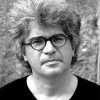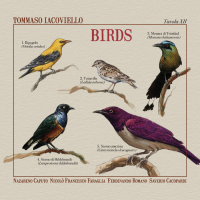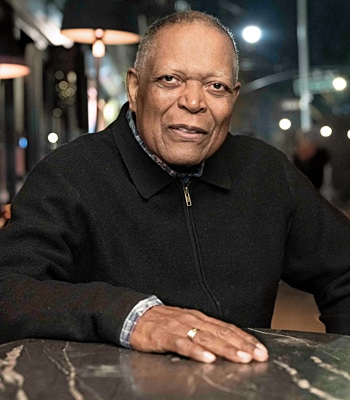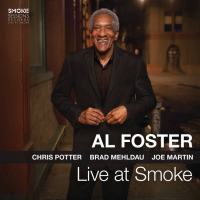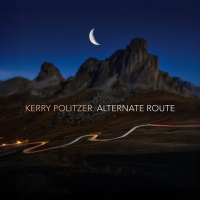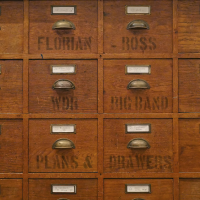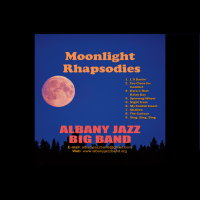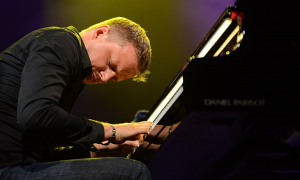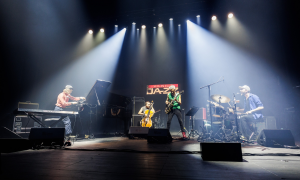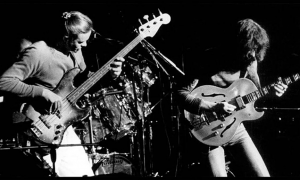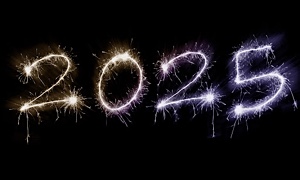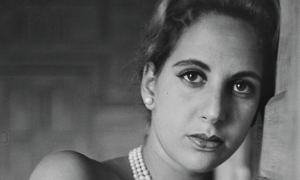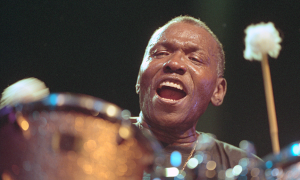Home » Jazz Articles » Interview » Sergio Armaroli: The Musical Omnivore
Sergio Armaroli: The Musical Omnivore
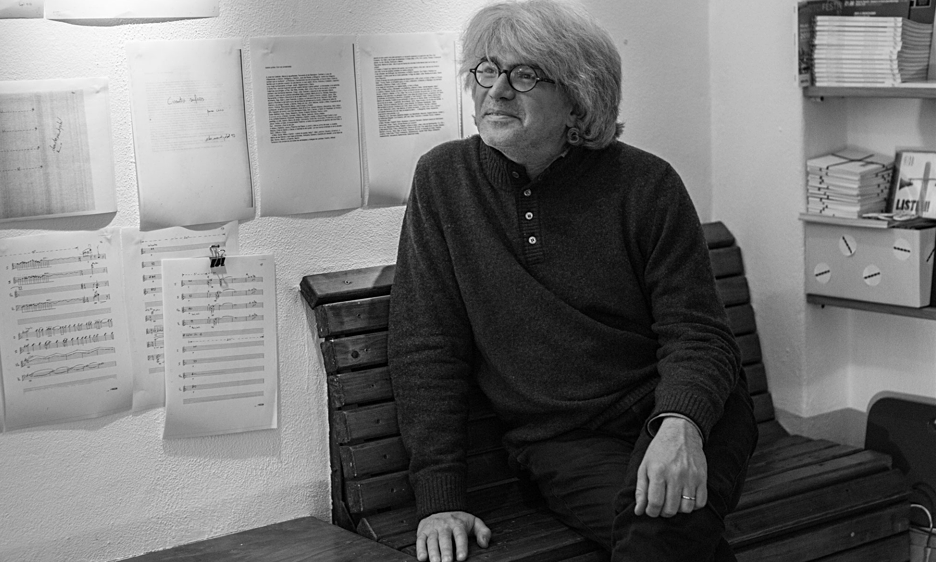
Courtesy Luisa Mizzoni
I'd like to collaborate with thoughtful musicians who pursue their own research, even radical, but necessary for truth and with their own language and not derivative.
—Sergio Armaroli
Because Armaroli's English skills are superior to my Italian, we conducted this interview via email.
All About Jazz: Tell us where you were born, and where in the world you are at this moment:
Sergio Armaroli: I was born by chance in Calcinate (Bergamo) on January 27, 1972, in Northern Italy, in a small town near Milan that preserves a very ancient past as a former Venetian republic. Today I live in Milan, my mother's city, where I studied, and my wife Francesca Gemmo, a composer and pianist, and I have decided to stay in this city, which I consider my city and where I have lived for more than three years.
AAJ: What was the first LP you purchased?
SA: My first listening experience was probably Duke Ellington. My father, who sadly passed away on September 20 this year, was a great jazz lover and always helped me and guided me along this path. He always listened to music, every day, and to help me fall asleep as a child, he would play Ellington and Billie Holiday, whose voices I hear as familiar and very close. The first LP I bought myself was a 45 rpm record by The Police, specifically the song "Every Little Thing She Does Is Magic." I remember the album cover and the song I had heard on television (Stewart Copeland's groove was incredible!). I must have been 9 or 10 years old, and my dream was to play the drums. The first jazz album I bought myself was a cassette: Shelly Manne's 2-3-4 (Impulse!, 1962) with Eddie Costa on vibraphone, and that's probably when the spark was ignited that showed me my true instrument, the instrument for me.
AAJ: Do you still listen to it today?
SA: Today I listen to EVERYTHING that comes my way, from John Cage to the world of sounds... even traffic and fluctuations in electrical voltage! I try to cultivate total listening: musical and sonic. It was important for me to listen to as much music as possible, but I particularly love Gregorian chant, Leoninus and Perotinus, Arvo Part, and Gustav Mahler and Anton Webern.
J.S. Bach is part of my daily routine (especially studying on my marimba: suites for cello and the well-tempered clavichord, which provide everything I need for my mental and physical balance on the instrument). Charlie Parker, Thelonious Monk, Steve Lacy, Cecil Taylor and blues as a original form; George Russell, Paul Bley, Keith Jarrett and all vibraphonists, but especially Milt Jackson, Walt Dickerson and Bobby Hutcherson, although Gary Burton and David Friedman are equally important to me.
AAJ: What music are you listening to at the moment?
SA: Yesterday, in particular, I listened to Tangerine Dream and many albums by David Toop, with whom I played in a duo to get in touch with him. I often let life's circumstances suggest what I listen to, and I cultivate a disordered, non-analytical way of listening. I still find it difficult to listen to myself, but I do it often to learn from myself (as Ornette Coleman did, but without being too self-centered like Thelonious Monk).
AAJ: How did you choose your primary instrument?
SA: My main instrument is the vibraphone in all its forms, including the prepared vibraphone. I also include this instrument within percussion, which I consider to be a category of sound and music. I chose it because I find everything I am looking for in the vibraphone, particularly its pure sound, which makes it a hybrid instrument open to all possible influences: Ondes Martenot, and Synth. In general, the vibraphone is similar to a piano (I studied piano for five years at the Conservatory), but I prefer to shift the vibraphone towards a more imagined electronic sound, as an intention, rather than a real one (I haven't yet developed live transformations on the instrument, but I will soon). In some cases, I see it as a synth, as in my duo with David Toop, in others as a piano, as in the quartet with Harri Sjostrom, Veli Kujala and Giancarlo Schiaffini; in others as a prepared guitar (I am also very influenced by Fred Frith, for example). In short, there are many influences and many perspectives that I do not hide because we are all an archipelago and contain worlds of sound. For me, the vibraphone is this extraordinary container of sonic and harmonic possibilities (I am developing a specific harmonic approach to the vibraphone; for example, in my solo album Density For Solo Vibraphone(s) (Leo Records, 2023) I address this aspect by pushing the instrument towards microtonality, which seems like an apparent paradox).
I studied classical music and graduated in classical percussion, electronic music, and jazz at the G. Verdi Conservatory in Milan. In addition, as a painter, I also graduated from the Brera Academy of Fine Arts in Milan, which allowed me to find synesthesia between image and sound, always searching for new materials and open sound experiences. For this reason, my true mentor and constant reference is John Cage. For several years now, I have been playing frame drums, which I study with Glen Velez and integrate into my vibraphone technique, especially from a rhythmic point of view.
AAJ: You mentioned John Cage. Am I correct to state his music philosophy is a thread woven through your entire discography, both composed and free improvisation? And for that matter, your daily routine and life?
SA: Yes, certainly John Cage's musical, artistic, poetic, and spiritual thought and work represent a point of reference for me, together with Marcel Duchamp's work, as a general attitude towards reality and sound-music. For me, it is necessary to start from a broader, extra-musical thought, and from that horizon of thought descend into the details of my instrument, the vibraphone, which reflects all this. Cage is a great initiator; he opened many doors and helped me find a path by putting together fragments of a mosaic that I thought were incompatible. Instead, attention to sound in its entirety and Cage's silence are also compositional methods; the continuous search for techniques that are forms of thought, the importance of chance and improvisation as a presence in time (brackets of time). All this entered jazz slowly, and over time it allowed me to see the vibraphone as an instrument for the objectification of sound (like Marcel Duchamp's Erratum Musical, for example) and other suggestions. We know that Cage did not like certain types of jazz, but in the last period of his life he became interested in improvisation and improvisers. Equally important for me was my collaboration with Fritz Hauser, to whom John Cage dedicated his piece for solo percussion, "One4," which always accompanies me in my mind (and which I recorded on an album, aboutCAGE Vol.8—One 4 / Solos for Percussion Da Vinci Classics, 2023). Among other things, for more than ten years I have been editing the series dedicated to the work of John Cage for Da Vinci Classics, which has now reached its tenth volume, interpreting many of his pieces.
AAJ: The Cage influence, especially his later interest in improvisation, is evident on your two ezz-thetic 2025 releases, Introducing A Very Heavy Person First Visit and Follow A Very Heavy Person First Visit. Can you tell us about your collaboration with Elliott Sharp, Mark Sanders, John Edwards}} and Steve Piccolo?
SA: The double quintet project A Very Heavy Person, the source material is written; it is a composition of mine entitled "24 Figure(s) | A Quattro," composed from melodic fragments divided into two parts: treble clef and bass clef within changing harmonic fields, which I initially conceived for the quartet Windows and Mirrors with Harri Sjöström, Veli Kujala, and Giancarlo Schiaffini, with whom I have been playing for several years. These "figures" become increasingly less defined until they suggest only fragments of a scale. The harmonic fields, on the other hand, are increasingly wider: from two to four voices (with the possibility of achieving greater depth with micro intervals). Improvisation extended and expanded these fragments into 24 separate pieces, organically united by Steve Piccolo's voice in a radio drama reminiscent of Cage's "Music for The City Wears a Slouch Hat," which you have grasped with great acuity. The group was suggested to me by Elliott Sharp, with whom I have a great rapport, and he immediately understood what we needed. He suggested this rhythm section, which he considers the best in the world: John Edwards on double bass and Mark Sanders on drums. They set the mood for the whole album with a truly unique groove, which is ever-present and always flexible.
AAJ: You've collaborated on numerous projects with Piccolo, an original member of John Lurie's Lounge Lizards. What is your history and connection with him?
SA: My relationship with Steve Piccolo goes back almost ten years. Steve lives in Milan like me and we are very close. Today I consider him part of the family, a great friend with whom I have explored a wide range of fields, from sound poetry to performance art to avant-garde jazz, which we always approach with a playful spirit. I consider him a great artist and a poet of rare intelligence. He understands the situation and helps me give it form. I met him after playing Luigi Russolo's intonarumori in Milan one evening, invited by a mutual artist friend. Since then, we have always collaborated with Gak Sato, the artists' magazine E IL TOPO with Oxana Maleeva's Rabotarom space, Alvin Curran, and many others. Together, we founded the research space about sound poetry ERRATUM about sound | visual | text, curating numerous exhibitions. Gruenrekorder recently released an anthology of our ten-year collaboration Listen! MadeRadioArt Anthology (2025), featuring all the pieces of sound art created under mutual influence, developing an idea of radio that gave rise to Erratum as a space of poetic consistency: exhibition and research.
AAJ: Same question for Elliott Sharp?
SA: I met Elliott Sharp thanks to Steve Piccolo; they are great friends and have known each other for many years, since their university days. Elliott, Steve, and I began collaborating by hosting an exhibition of his visual scores at Erratum Syzygy and releasing a double CD Syzygy (Dodicilune, 2019). As a trio, we first recorded Blue in Mind (Leo Records, 2021), dedicated to the world of blues, based on fragments of deconstructed historical blues pieces, and then moved on to subsequent projects, including Songbook Immaginario, which also involved artificial intelligence. Working with Elliott is always a great adventure. His versatility allows me to contextualize anything on my vibraphone, and this, combined with Steve's voice, is truly very special.
AAJ: You have covered the music of legendary musicians and composers such as Thelonious Monk, Albert Ayler, Alvin Curran, Karlheinz Stockhausen / Ives Ensemble and Luc Ferrari using unique lineups and taking an interesting perspective. Can you tell us your motivation for this approach?
SA: The influence of jazz, which I consider my mother tongue (langue maternelle), and music of the late 20th century, particularly from the perspective of the New York school (Cage, Feldman, Wolff, etc.) and post-Darmstadt European experimentation, has allowed me to intertwine all these great musicians you mentioned under a common point of view and a unified interpretation, always alternating reflection through writing (score and written music) and memory of oral tradition (improvisation). In fact, all these names and all the experimentation of the second half of the twentieth century are quite uniform and unified for me, centered on the concept of the loss of harmonic center, of research, of the emancipation of dissonance (as Schoenberg taught) and of experimentalism in an open version: experimental music as a unity of experience and intermediality (the Fluxus approach is very useful in this case). Let me explain: I reinterpreted and deconstructed Thelonious Monk in three stages: the first with Giancarlo Schiaffini in a duo (where I don't play the vibraphone but only African instruments that lead to a new, rhythmic-percussive conception of the keyboard and vibraphone, starting from the balafon and thumb piano to the talking drum), investigating the archetype of blues, its foundational structure of any truly contemporary thought for me (which is why I talk about mother tongue!); the second in a quartet, expanding the discourse to Monk's repertoire, edgy, dissonant, and strongly unified: the essence of bebop and African-American music, and in this case, incorporating the vibraphone conceived as the "essence of pianism" and without the piano. The third will be released next year, featuring a sextet and vocals. The lyrical Monk, a completely unique lyricism, with Francesca Gemmo's piano concluding with an almost quotation of a possible pianism through a pre-classical Monk piece such as "Children's Song" but interpreted classically in solo piano.
What has always struck me about Albert Ayler is the absolute truth and honesty in his playing, which is also a form of prayer. Unlike Monk, his exploration of a non-jazz repertoire, freeing it, in jazz, from any cliché in favor of an explosion of freedom and sound, allowed me to deconstruct here too, first in a duo with Schiaffini, where the vibraphone paradoxically does not improvise in the canonical sense but re-proposes the thematic material with absolute detachment and as if cooled (with the addition of ancient instruments in line with Ayler's experimentation in his choice of instruments, I am thinking of the use of the harpsichord or the violin by Michel Samson, a musician who has greatly inspired me in this intertwining of contemporary classical music and free jazz) towards a more traditional and free nonet version that will soon be released by Dodicilune.
As far as Alvin Curran is concerned, our collaboration focused on his fakebook and therefore touched on his more jazz sensibility, but always on the borderline, on the edge of styles and definitions that are too clear-cut. Today, from my point of view, a musician's behavior should not be too specific but rather ambiguous, with the courage to lose oneself in order to find a voice of truth that, if authentically one's own and original, cannot be contained within overly restrictive and corrupt definitions. This is my direction: not unique but multifaceted, moving forward with the humility to redesign my own way within history, not repeating myself but trying to create something meaningful, first and foremost for myself, each time.
I have had a long relationship with Stockhausen's music since my years at the Conservatory. It seemed natural to me to tackle Tierkreis in an expanded form, as it seems to have been written for vibraphone and glockenspiel in unison with the Maestro's original music boxes, which I had the honor of being able to use on this album. In this case too, I always work on objectifying the sound. Once again, the vibraphone allows me this detachment, which I try to amplify with similar instruments in order to arrive directly at the musical idea, limiting subjective interference and a certain romanticism that is so strong today.
Finally, Luc Ferrari and his collaboration with Brunhild Meyer Ferrari, first with the theatrical version of Tautologos III with the Teatro Arsenale in Milan, directed by Marina Spreafico, and then with Exercises d'improvisation in quartet with Giancarlo Schiaffini, Francesca Gemmo and Walter Prati. Ferrari's music and work straddle the boundary between genres, allowing for an exploration of sound and listening in relation to theater. With Brunhild, I also curated an exhibition of Luc's collages in my Erratum space in Milan. As you can see, music is part of a broader discourse that involves vision, text, and meaning. In all this, the vibraphone is once again an instrument for objectifying sound.
AAJ: Some may say the opposite would be your free improvisation work, but would you agree that the two approaches are not mutually exclusive?
SA: Of course, the two approaches are complementary because it is not so much the method but the way, the thought that guides improvisation between writing and memory. I believe it is important to reduce one's subjective presence (and today we really need it!) to bring out the real, the world around us. Think of Cage's "4:33": a great model of presence within sound. I think that within this time that Cage shows us, for example, we can bring opposites together in total balance. So I limit my subjectivity to bring out the world of sounds around me and discover that I am no longer alone. All this great work of mine has been determined by the desire to build a context around me, since I didn't like what I saw, or rather, it didn't allow me to be who I wanted to be. Finally, even in improvisation, we focus on a context and not just on the individual, and so we try to improve the world, as Cage said, without making things worse.
AAJ: It is obvious that, as a music stylist, you are an omnivore, and no approach is outside of your reach. Can you tell us about your recent collaboration with David Toop?
SA: My encounter with David Toop began at the end of 2020 during a performance exhibition that was supposed to take place at Erratum but could not be held due to the outbreak of the pandemic—one of the worst moments in our recent history. Given the impossibility of meeting, I thought of proposing to David a project of audio file exchange—file sharing technique—using the great potential of the internet to compose global music. I started by sending David some short improvisations on solo vibraphone, always very minimal, with timbral variations, motor on/off, etc. David sent me back some very rich and evocative electronic/concrete pieces, as is his style, and I tried to play within his soundscape. This is how And I Entered Into Sleep (Die Schachtel, 2025) was born, produced and published in the prestigious and carefully curated Decay Music series with graphics by Bruno Stucchi and thanks to the collaboration of Fabio Carboni of Soundhom. Only recently, after the album was recorded in the studio, did I meet up with David for the Forlì Open Music 2025 improvised music festival, thanks to an invitation from the festival director Ariele Monti, and we were able to play live. I particularly love the way David thinks about sound; his approach is truly essential and profound. He is particularly interested in the vibraphone, whose complexity of references he often captures, hidden from the listener. His thinking about sound has greatly influenced me (I too come from reading and listening voraciously to "Oceano di suono," a fundamental essay for understanding the developments of music today, contemporary and past: but when music is played in real time, it is always contemporary). That optimism and openness to listening is, for me, a fundamental attitude that I have been able to put into practice thanks to the thinking and work of David Toop, who guides and inspires me. I must say that our meeting was very natural, everything went in the right direction, which is that of an inhabited soundscape, with discretion and respect for every little sound. His interest in small sounds is very important to me because it preserves a precious, necessary essence of form in things and reflects what I understand as Percussion as a broader category of Music towards Sound. Furthermore, in all this, David almost accidentally found similarities with Proust's Recherche, discovering that Proust's great work on memory begins and ends with a bell sound reminiscent of a resonant vibraphone (and he writes about this in the text accompanying the album).
AAJ: Your circle of musical playing partners is forever expanding, and recently it is accelerating with the players mentioned above, plus Evan Parker, Barry Guy, Pierre Favre, Andrea Centazzo, Giancarlo Schiaffini, Harri Sjöström, Giovanni Maier, Fritz Hauser and of course Francesca Gemmo. Are there any contemporary musicians you would like to collaborate with?
SA: Good question. I'll answer indirectly without naming names for superstition's sake. I'd like to collaborate with thoughtful musicians who pursue their own research, even radical, but necessary for truth and with their own language and not derivative. I would like to engage with people of integrity in order to grow, learn, and face this world that is too much like a market. Music is a temple and must be respected. If I remain true to myself, I am sure I will find these traveling companions. By truth, I mean fidelity to one's basic premise, to one's own specific meaningful sound, as my friend and maestro Giancarlo Schiaffini so admirably defines it.
AAJ: What musician or musicians now dead might you dream of performing with?
SA: No one in the sense of performance. I can't imagine playing with musicians who are no longer with us. I can feel them very deeply, close to me. I try to play with musicians who are alive and living, in the sense of being free from derivations and fads: free men. Free music for free men. With this attitude, I can say that I always play with necessary musicians from the past, present, and future... but I won't name names.
AAJ: What do you hope audiences take away from experiencing your music?
SA: I don't expect the audience to get anything in particular out of my music, I never think in those terms. It's enough for me to know that my music can be a source of relief, help or inspiration, even if only to engage in dialogue with someone as attentive and interested as you. I mean, perhaps I hope that my music can be an opportunity for dialogue and discussion. Even if only a moment of pure listening pleasure. Listening, that's the point. Openness and humility. Attention, care, and respect. The rest is more for me; it keeps me present, allows me to express myself, and it's a great privilege to share all this with an audience. Which audience? The one that is willing to listen and spend time with me.
Tags
PREVIOUS / NEXT
Support All About Jazz
 All About Jazz has been a pillar of jazz since 1995, championing it as an art form and, more importantly, supporting the musicians who make it. Our enduring commitment has made "AAJ" one of the most culturally important websites of its kind, read by hundreds of thousands of fans, musicians and industry figures every month.
All About Jazz has been a pillar of jazz since 1995, championing it as an art form and, more importantly, supporting the musicians who make it. Our enduring commitment has made "AAJ" one of the most culturally important websites of its kind, read by hundreds of thousands of fans, musicians and industry figures every month.


